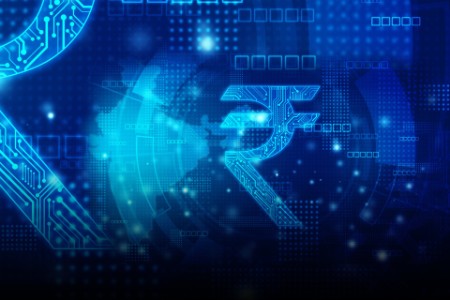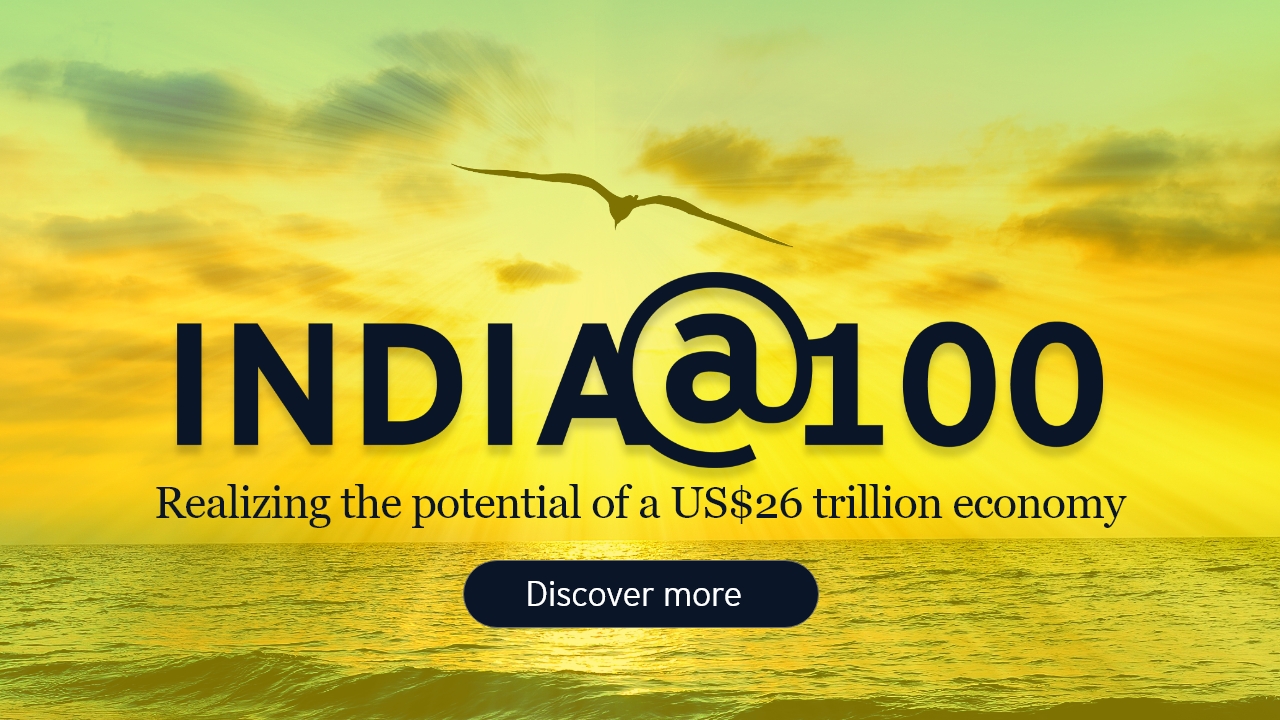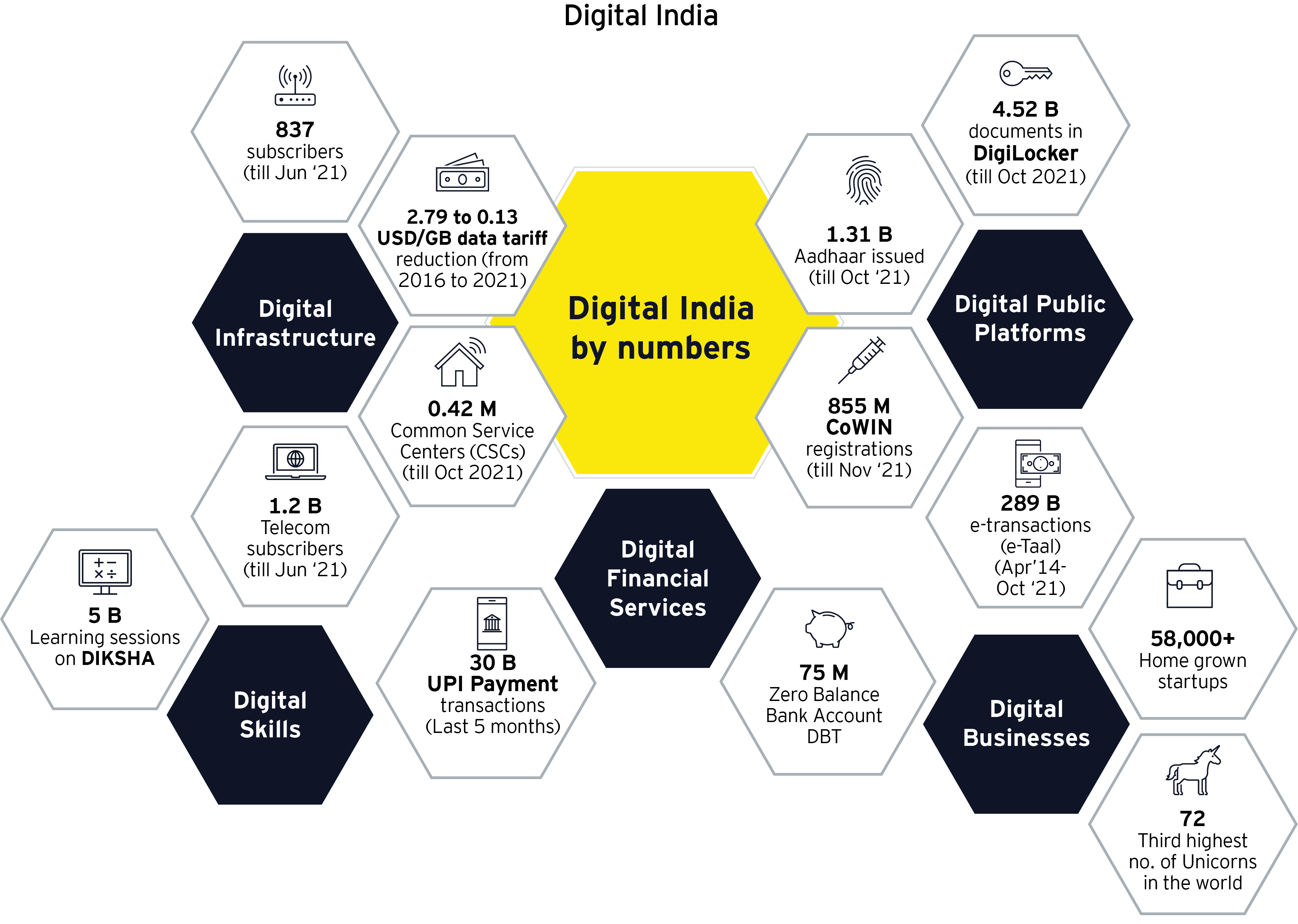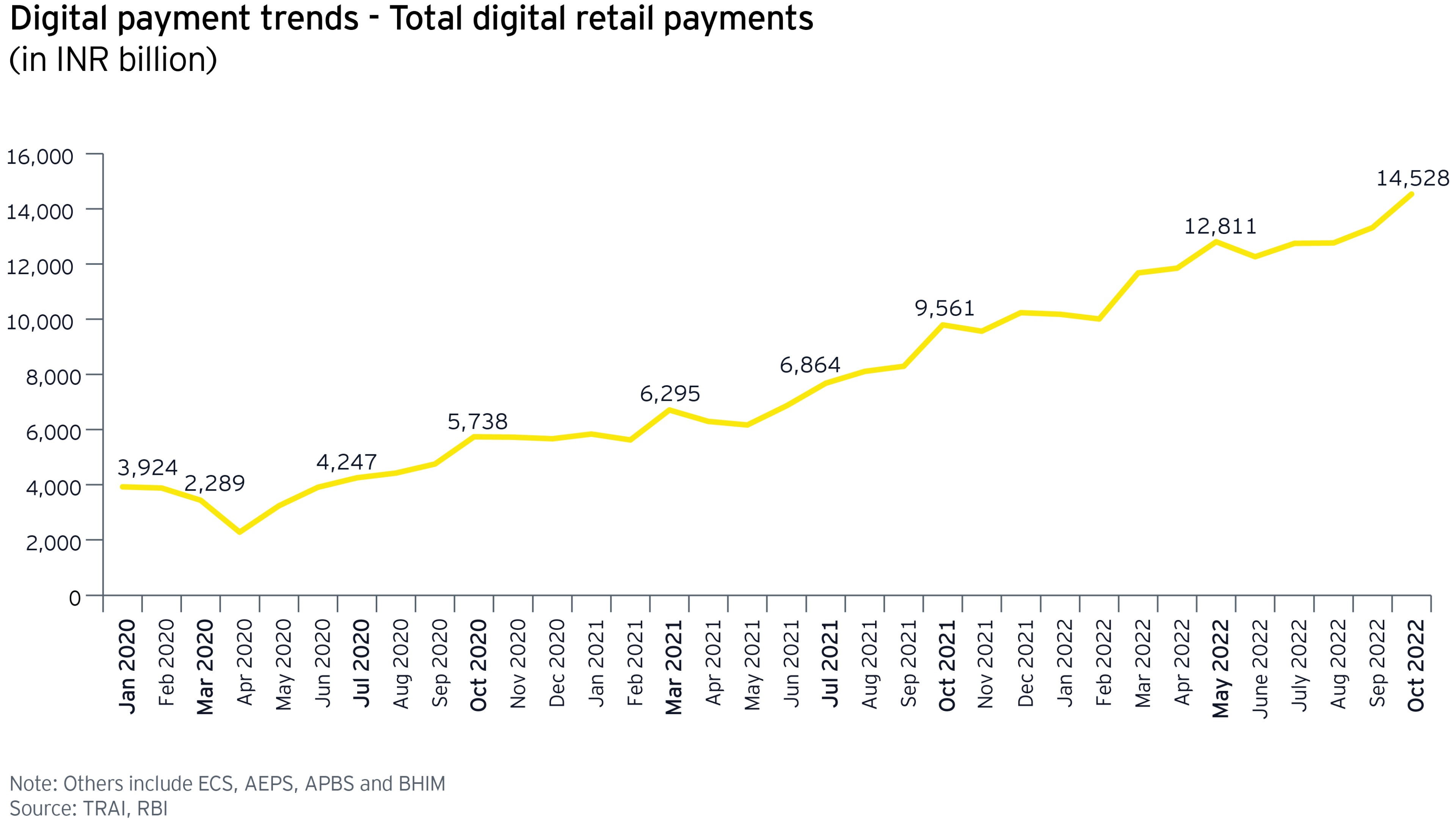Economic impact of digitalization in India
The economic impact of digitalization can be seen across the Indian economy.
- India’s core digital economy share in GVA increased from 5.4% in 2014 to 8.5% in 2019, with a digitally dependent economy estimated to be around 22% of GDP in 2019.
- In absolute US dollar terms, India’s digital economy exhibited a growth rate of 15.6% over the period 2014 to 2019, which was 2.4 times faster than the growth of the overall Indian economy.
- Digital output multiplier has increased over time from 1.35 in 2014 to 1.52 in 2019, highlighting the role of investments to drive growth.
- 62.4m workers were employed in the digitally dependent economy in 2019.
Digitalization of government and governance
Government of India has been progressively digitizing its interface with citizens and thereby making it easier to get licenses, certificates, payment of taxes and bringing efficiency in governance outcomes. The government has also digitalized procurement of goods and services by creating a centrally managed marketplace - Government eMarketplace (GeM), which is one of the largest procurement platforms with annual gross merchandise value of US$14.2b.
Social aspects of digitalization, of bringing relief to people during the pandemic, were driven on India’s digital public infrastructure — COWIN36, a technology platform created by the government to control the rollout of the world’s largest vaccination program.
Broadband usage has been surging, driving marketplaces
Broadband usage in India has been growing at an unprecedented pace. Mobile broadband (MBB) subscribers have increased from 345m to 765m over the past five years. Data traffic per user has seen a jump of 31% over the last five years reaching 17GB as of December 2021. As a result, India’s data traffic usage from 2017 to 2021 was among the highest in the world with a CAGR of 53%. India’s Gen Z spends an average of 8 hours per day online. The next wave of smartphone adoption is happening in rural India. It is now expected that India would have the second largest universe of online shoppers by 2030, estimated at 500m to 600m.
Online marketplaces have been exploding across all sectors of the economy. Reflecting the behavioral change, it is but logical that these metrics will continue to explode. The size of the e-commerce market is expected to grow to US$350b by 2030.





